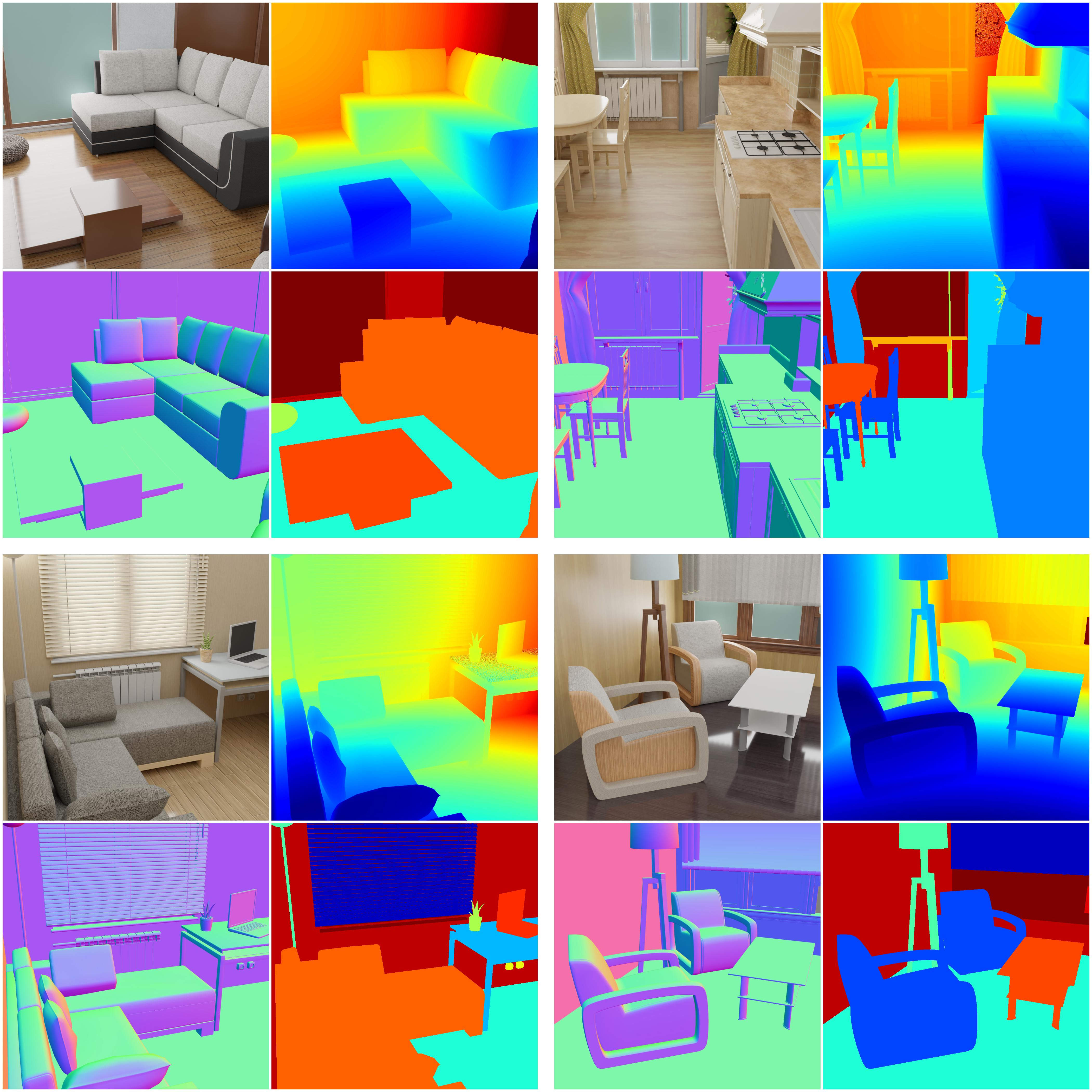A procedural Blender pipeline for image generation for Deep Learning.
Check out our arXiv paper (we are updating it from time to time): https://arxiv.org/abs/1911.01911
In general, one run of the pipeline first loads or constructs a 3D scene, then sets some camera positions inside this scene and renders different types of images (rgb, depth, normals etc.) for each of them. The blender pipeline consists of different modules, where each of them performs one step in the described process. The modules are selected, ordered and configured via a .yaml file.
To run the blender pipeline one just has to call the run.py script in the main directory together with the desired config file and any additional arguments.
An exemplary config.yaml can be found in the respective example folder.
python run.py config.yaml <additional arguments>
This runs all modules specified in the config file in a step-by-step fashion in the configured order.
The following modules are already implemented and ready to use:
- Loading: *.obj, SunCG, Replica scenes, BOP datasets.
- Lighting: Set, sample lights, automatic lighting of SunCG scenes.
- Cameras: set, sample or load camera poses from file.
- Rendering: RGB, depth, normal and segmentation images.
- Merging: .hdf5 containers.
For advanced usage which is not covered by these modules, own modules can easily be implemented.
- Basic scene: Basic example
- Simple SUNCG scene: Loads a SUNCG scene and camera positions from file before rendering color, normal, segmentation and a depth images.
- SUNCG scene with camera sampling: Loads a SUNCG scene and automatically samples camera poses in every room before rendering color, normal, segmentation and a depth images.
- Replica dataset: Load a replica room, sample camera poses and render normal images.
- COCO annotations: Write to a .json file containing COCO annotations for the objects in the scene.
... And much more!
Now head on to the examples and check the README there: get some basic understanding of the config files, start exploring our examples and get an idea about the power of BlenderProc.
Now it's a good time to take a look at the source code: all modules are there. Explore and look at the short guide about writing your own modules.
Found a bug? help us by reporting it. Want a new feature in the next BlenderProc release? Create an issue. Made something useful or fixed a bug? Show it, then. Check the contributions guidelines.
See our change log.
